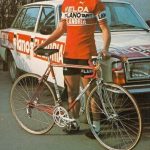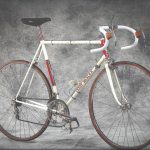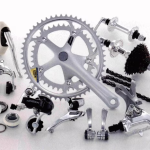Shimano has been the largest supplier of groupsets for several years now and since the replacement in cycling races of the yellow Mavic cars by the blue Shimano, their market share seems to be growing. However, until 1973 there was no mention of this world-famous brand and the best-known suppliers were the Swiss Weinmann (brakes), the Italian Universal (brakes) and Campagnolo (groups), the French Mafac (brakes) and Simplex (gears).
Campagnolo in particular was supreme because they were the first to come onto the market with a complete group in the 1950s. Their groups Gran Sport, Record, Nuovo Record and later Super Record were used by most of the professional teams.
It was therefore quite surprising when the Flemish Flandria team decided in 1973 to equip their bicycles with Shimano components. And it must be said that not all riders of the Flandria team were happy with that. It was a leap in the dark with a lot of question marks.
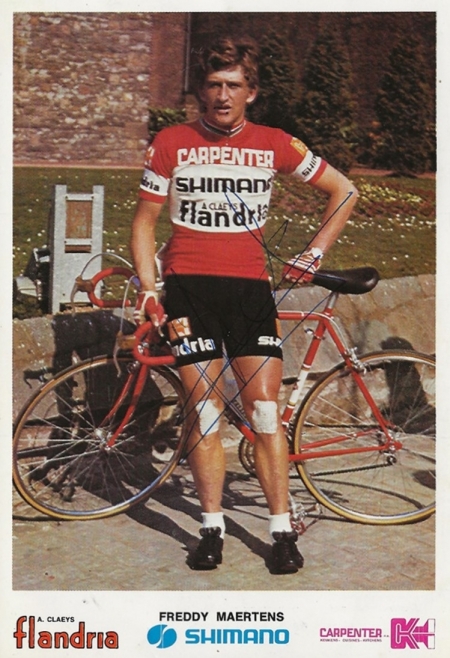
Cyclists generally like reliable equipment quite a bit and Shimano's components weren't initially. So it happened more than once that the gears locked up, the material broke and the spokes of the wheels came loose and broke.
For example, in the final of the Tour of Flanders 1973, Walter Godefroot had to deal with a chain that ran off through the gear system during the climb of the Muur van Geraardsbergen. His chances of winning were immediately gone.
The group that Shimano installed on the Flandria bicycles was the Dura Ace group. An amalgamation of Duraluminum (a very strong aluminum) and the English word Ace (ace or the best). A group that still exists and is still the highest quality group from Shimano.
The collaboration with Flandria
But how did the collaboration between Flandria and Shimano come about?
After the 1970 World Championship, which was won by the Flandria rider Jean Pierre Monseré, the general manager of Flandria Pol Claeys thought that Campagnolo would give the Flandria team better conditions. However, this did not happen and Claeys was left with an egg. So when the opportunity presented itself for Shimano to become a co-sponsor of his Flandria team, Pol Claeys was not unwilling to do so.
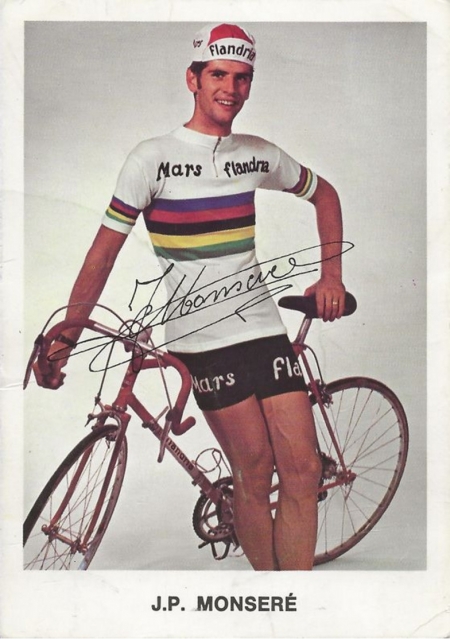
The first contacts between Shimano and Flandria were made during the Bicycle Show in New York in 1972, when Shimano and Flandria stood side by side. Shimano already had a serious market share in the United States, but not yet in Europe. The then PR man of Flandria Marcel Verschelden then got the proposal to equip their bikes with Shimano parts and the rest is history.
When this came to the attention of Tullio Campagnolo, he was not pleased at all and he offered a lot of money to Flandria not to go into business with Shimano, but the relationship between the two had already cooled too much and Pol Claeys chose the challenge with Shimano to go.
The disastrous 1973 World Cup in Barcelona
Shimano had just entered professional cycling when the battle between Shimano and Campagnolo came to a head at the 1973 World Cycling Championships in Barcelona. Eddy Merckx was the clear favorite for the world title, but his young compatriot Freddy Maertens was also one of the title candidates.
When Merckx attacked from the leading group and made a gap, Freddy Maertens drove alone into the gap. When he came to Merckx, however, they kept their legs still so that Gimondi and Ocana came back to join. In the final sprint, Maertens started the sprint for Merckx, but he couldn't get out of the wheel, so Gimondi eventually won.
According to Merckx, Maertens started the sprint so hard that he had to leave a gap and was no longer able to sprint fully, saying he was dead.
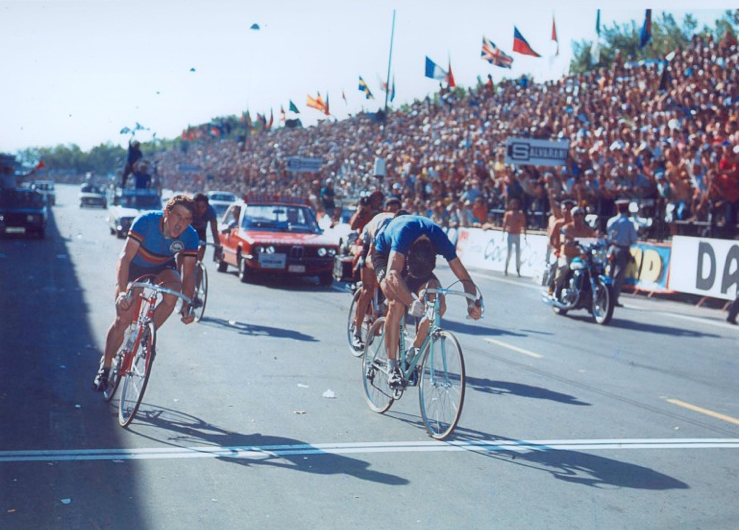
Maertens, however, felt like a cop and blamed Merckx for deliberately letting Maertens lose when he noticed that he would not win the sprint. Maertens did try to recover Gimondi, but he kept the door closed in a rather unorthodox way, so that Maertens finished second, .
Maertens, incited by Flandria boss Pol Claey and his fellow teammates, spoke of a conspiracy. According to them, Merckx let Gimondi win because both riders rode with Campagnolo components. Shimano was absolutely not allowed to win.
There is indeed evidence that Tullio Campagnolo is said to have told Walter Godefroot that Shimano would not win the World Cup but that was in a playful way when both gave their opinion on who would win the World Cup. Would a great rider like Merckx stoop to such an act? Whatever happened that day, things never worked out between Merckx and Maertens.
2 Flandria teams: one with Campagnolo, the other with Shimano
Whatever happened at the 1973 World Cup in Barcelona, the fact is that from 1974 Flandria will start the cycling season with 2 professional teams: the Belgian Flandria – Carpenter – Confortluxe, which rides with bicycles equipped with Campagnolo parts and the French Flandria – Merlin Plage – Shimano who rides bicycles equipped with Shimano.
The main reason was that Flandria entered into a contract with Campagnolo, but also had a contract with Shimano. A bizarre situation in itself!
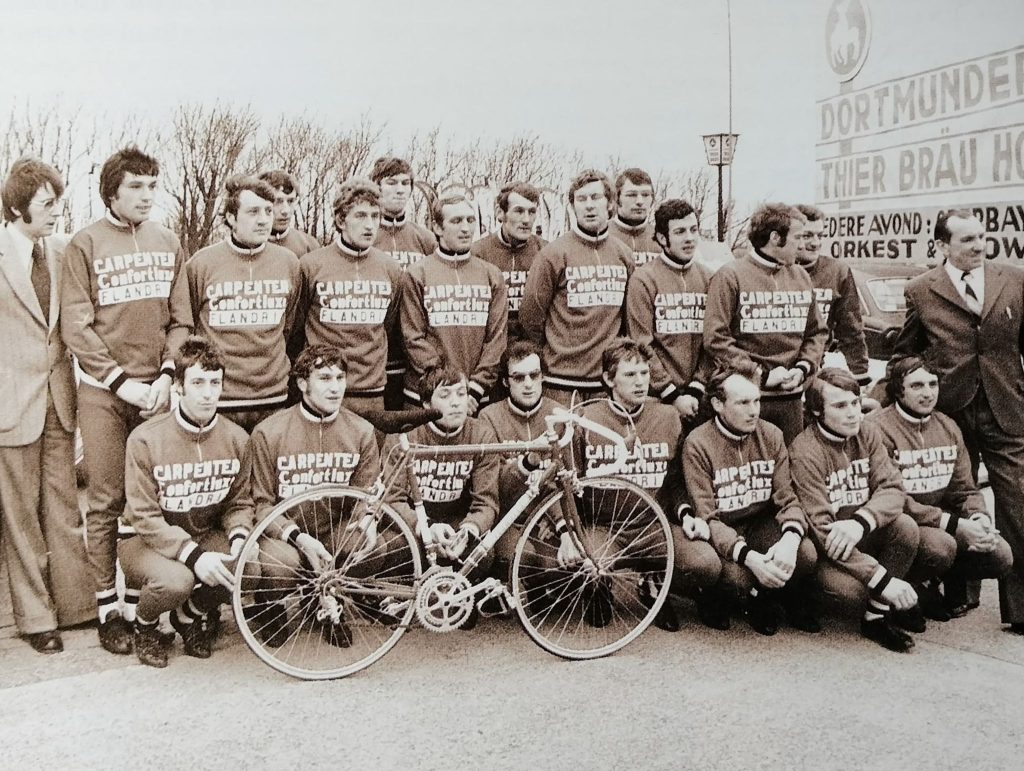
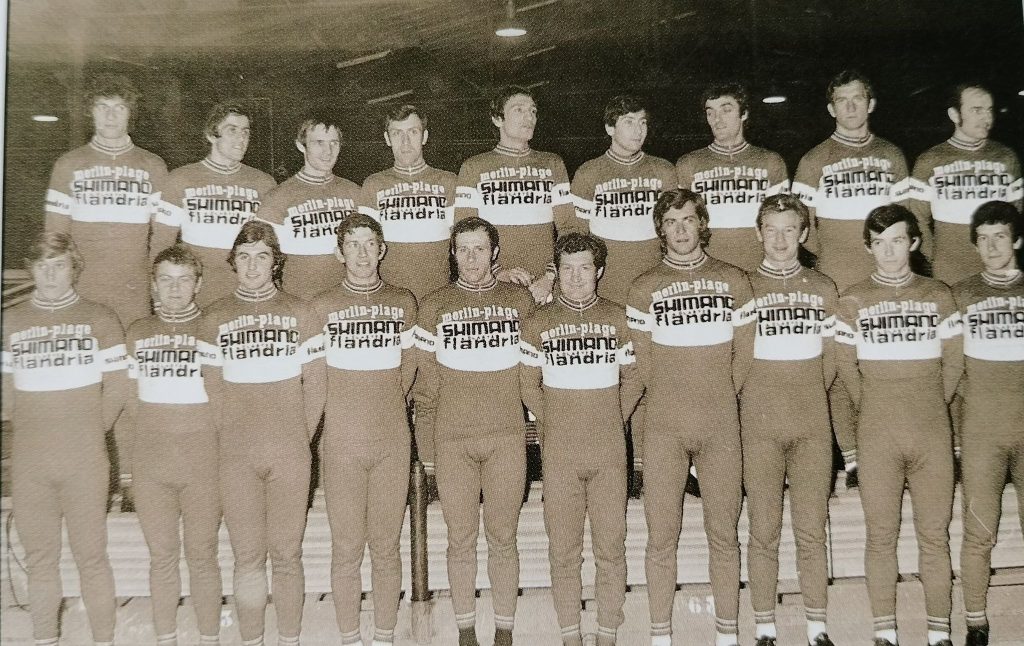
Shimano nowadays
Shimano entered the professional cycling world in 1973 thanks to Flandria and has broken the Campagnolo monopoly in just a few years, despite the numerous problems in the initial phase.
Thanks to the diligent follow-up of Shimano's technical staff during this early period: an engineer was always present with the plow, all breaks were registered, components were constantly analyzed and improved, they are where they are now and more than 80% of the pro teams are resting out with their groups.
After the arrival of the Shimano Dura Ace group, other groups for both professional and creative cycling soon followed: Shimano 600, Shimano 105, Shimano Ultegra, Shimano Tiagra, Shimano Sora.


